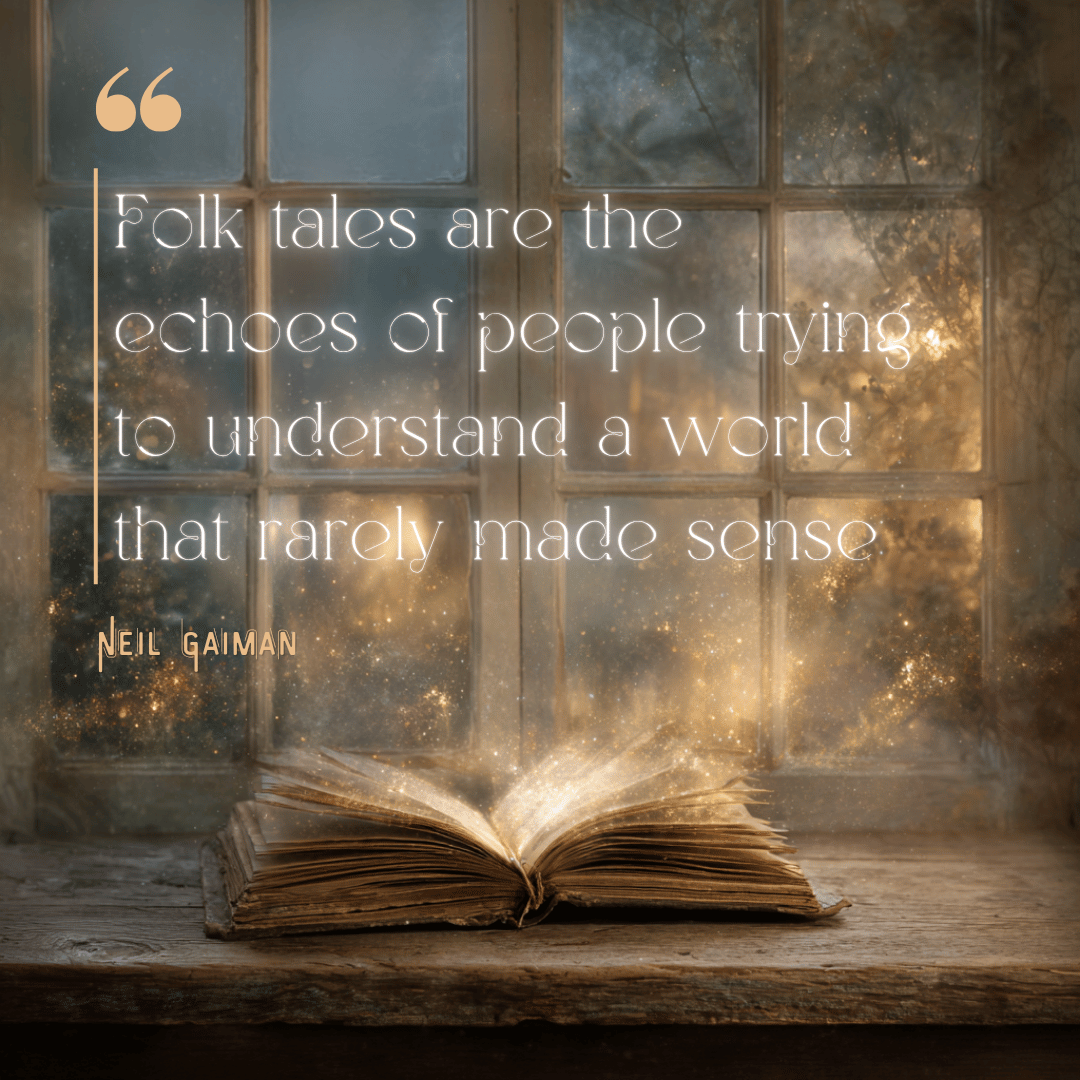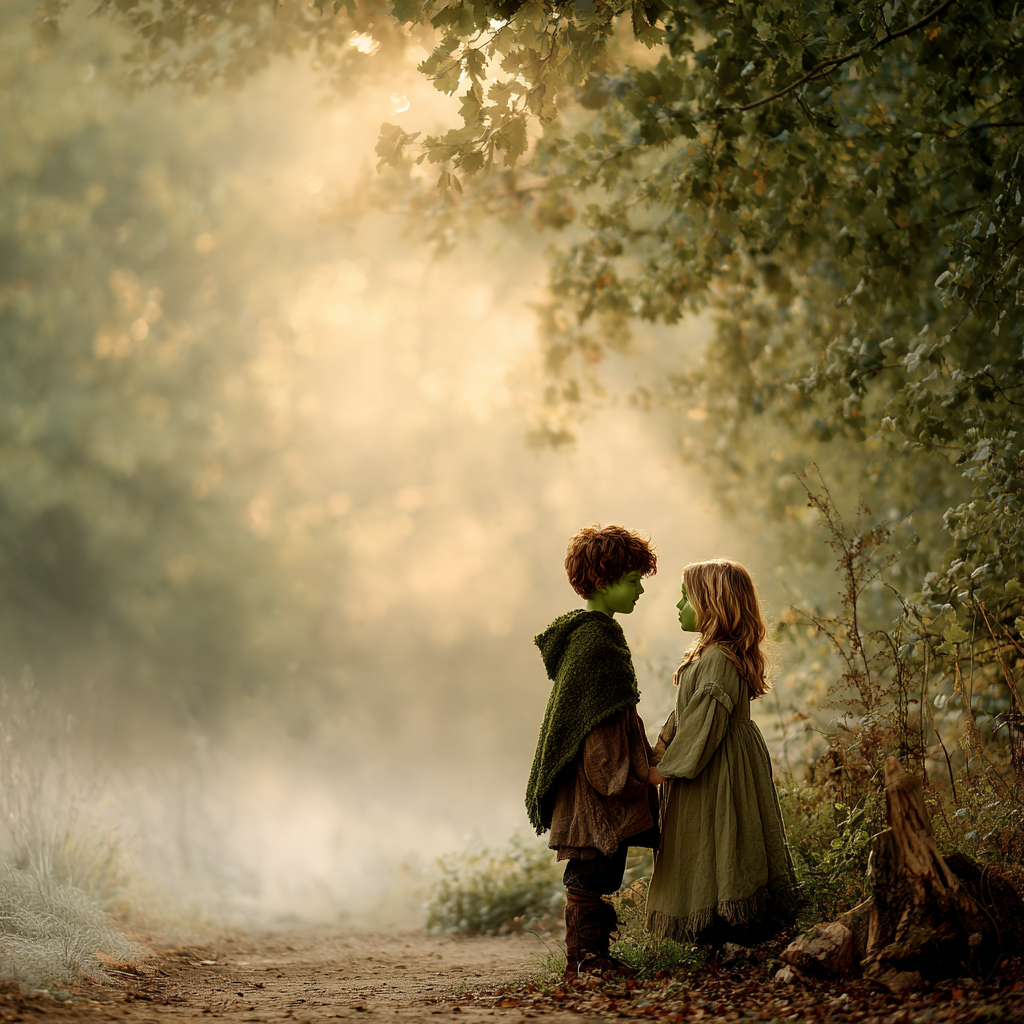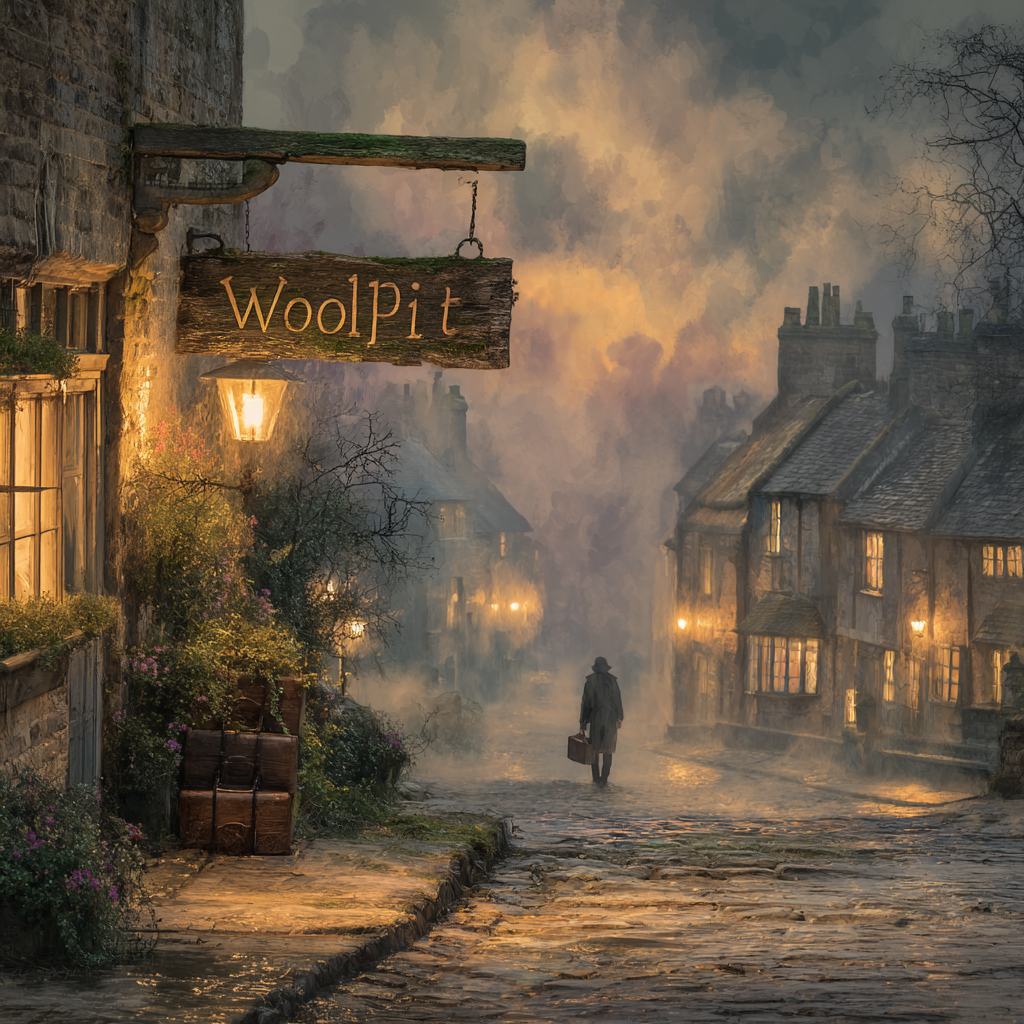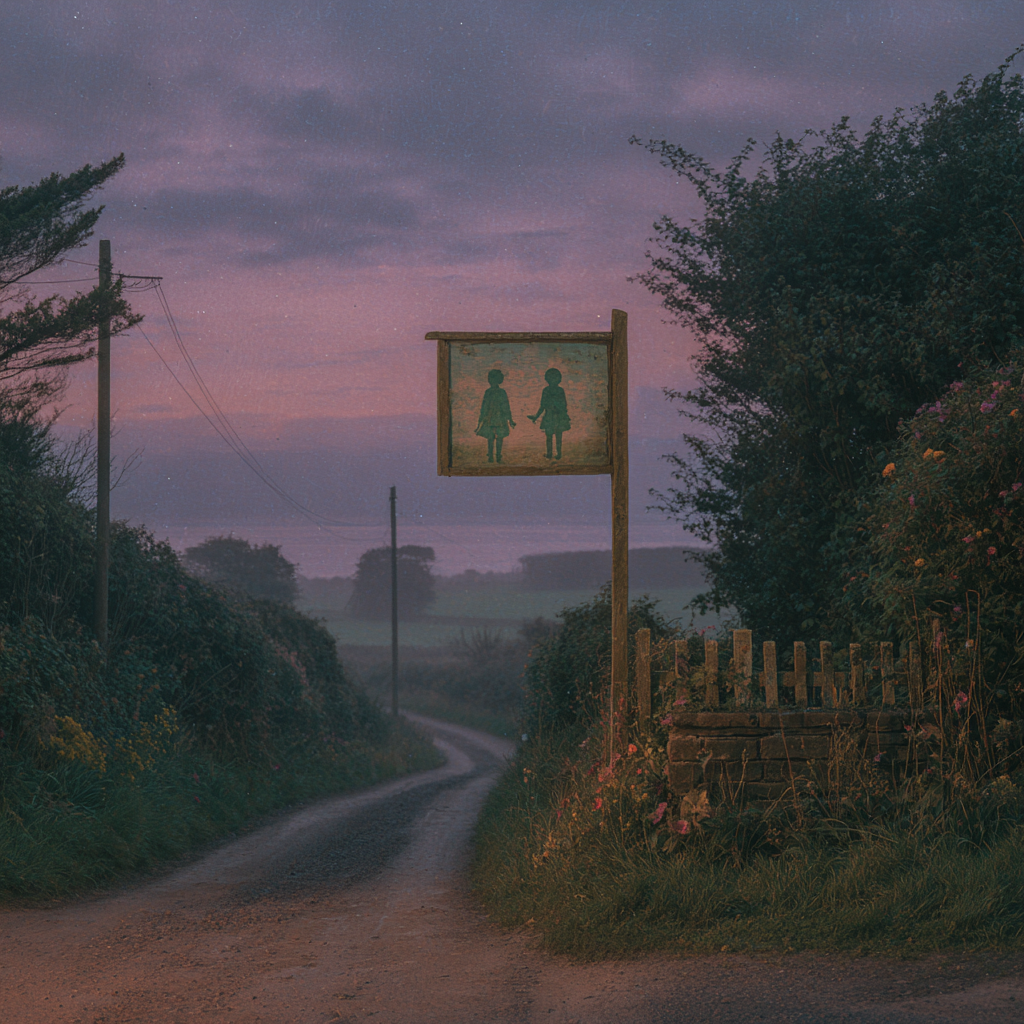
“Folk tales are the echoes of people trying to understand a world that rarely made sense”.
– Neil Gaiman
On the edge of a quiet Suffolk lane, in the village of Woolpit, stands a weathered sign bearing two figures: a boy and girl, hand in hand above the word Woolpit. Their faces are calm, their robes old-fashioned. Although you can’t see it, their skin is green.
The story, passed down for centuries, has the texture of mist and old paper. It begins in the twelfth century, when England was raw with civil war and superstition, and tells of two strange children found by harvesters near a wolf pit in the woods. Their skin, it was said, held the green of wild nettles. Their eyes blinked at the sun as if it burned. They spoke no known tongue, wore unfamiliar clothes, and refused all food save for raw broad beans, pulled fresh from their pods.

Written in Monastic Hands
Our earliest records come not from rumour but from the pens of two monks: William of Newburgh and Ralph of Coggeshall. William, writing in the 1180s, expressed caution but committed the tale to parchment. Ralph, abbot of a nearby monastery, added colour and clarity. According to both, the children said they came from a place called St Martin’s, where everything was green, and twilight never lifted. They had followed the sound of bells through a cave, only to awaken beneath a strange sun in Suffolk.
The boy, the younger, grew ill and died soon after his baptism. The girl survived. In time, she learned English. She ate new foods, and her green hue gradually faded. She grew into a woman, worked in a local household, and, as some claim, married a man from King’s Lynn.
Renaissance Curiosity and Lunar Theories
The tale, like a buried seed, sprouted again in the age of marvels. Renaissance thinkers, fond of oddities, turned their gaze to Woolpit. Robert Burton, in The Anatomy of Melancholy (1621), mused that the children might have fallen from the moon. Francis Godwin, in The Man in the Moone, imagined a celestial traveller meeting moon-dwellers not unlike the children of Woolpit.
These were not declarations, but daydreams—poetic rather than probable. What mattered was not proof, but wonder.
Victorian Parlours and Fairy Lore
By the 1800s, the green children had found a new home: the drawing rooms of Victorian England. Writers like Thomas Keightley gathered the tale into collections of fairy lore, threading it among changelings, elf-children, and Otherworld crossings. In such retellings, the children were sometimes spirits, sometimes warnings—always touched by strangeness.

Illustrators imagined them with garlands and shadowed eyes. Their story appeared in penny pamphlets, school readers, and local histories. By the time the railway reached Suffolk, Woolpit was no longer just a village—it had become a story.
Modern Echoes in Books and Song
In the twentieth century, reinterpretation took root. Herbert Read’s novel The Green Child (1935) turned the legend into philosophical allegory. J. H. Prynne echoed the mystery in his 1970s poem The Land of Saint Martin. Writers such as Randolph Stow and Kevin Crossley-Holland adapted it for younger readers, while Nicola LeFanu composed an opera based on the tale in 1990.
A band named The Green Children released ethereal music in homage. Fiction authors from Terri Windling to J. Anderson Coats used the legend as both seed and spine.
The tale is pliable. With each retelling, something shifts. Yet the core remains: two lost children, language unknown, skin tinged with green.
Woolpit Today
The legend lingers not only in books but on Woolpit’s streets. The village sign still depicts the children. Local school banners bear their likeness. Visitors can follow walking trails marked by silhouettes of the boy and girl, their footsteps quiet on the old lanes where hawthorn scents the summer air. Leaflets recount their tale in softened language, suitable for curious families.

Here, folklore is not kept in glass cases. It breathes through hedgerows and heritage walks. Even the name Woolpit, from the Old English wulf-pytt, reminds us: once a trap for wolves, now a snare for imagination.
Why We Still Wonder
Explanations have been offered. Some say the children were Flemish refugees, displaced by war and speaking a foreign dialect. Others suggest chlorosis—green sickness—caused by dietary anaemia. Some believe they were traumatised or abandoned, made strange by circumstance. Still others hear, in their words, echoes of fairyland.
Perhaps none are entirely right. Or entirely wrong.
We remember them not for their explanation but for their enigma. Their story is a mirror, held up to each age that retells it. In a world still searching for belonging, still puzzled by the unfamiliar, still longing for meaning, the green children of Woolpit walk beside us.
And perhaps always will.
